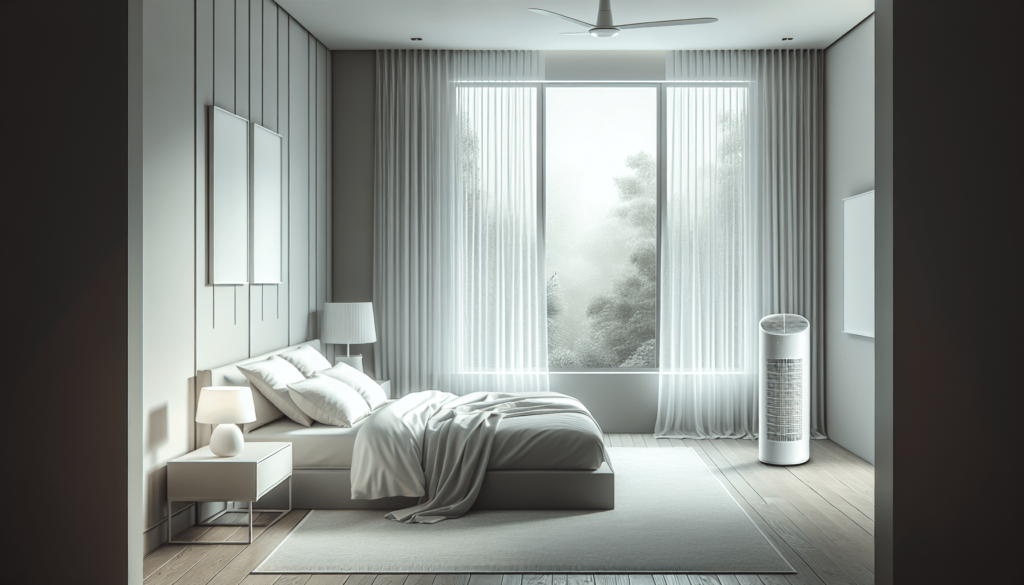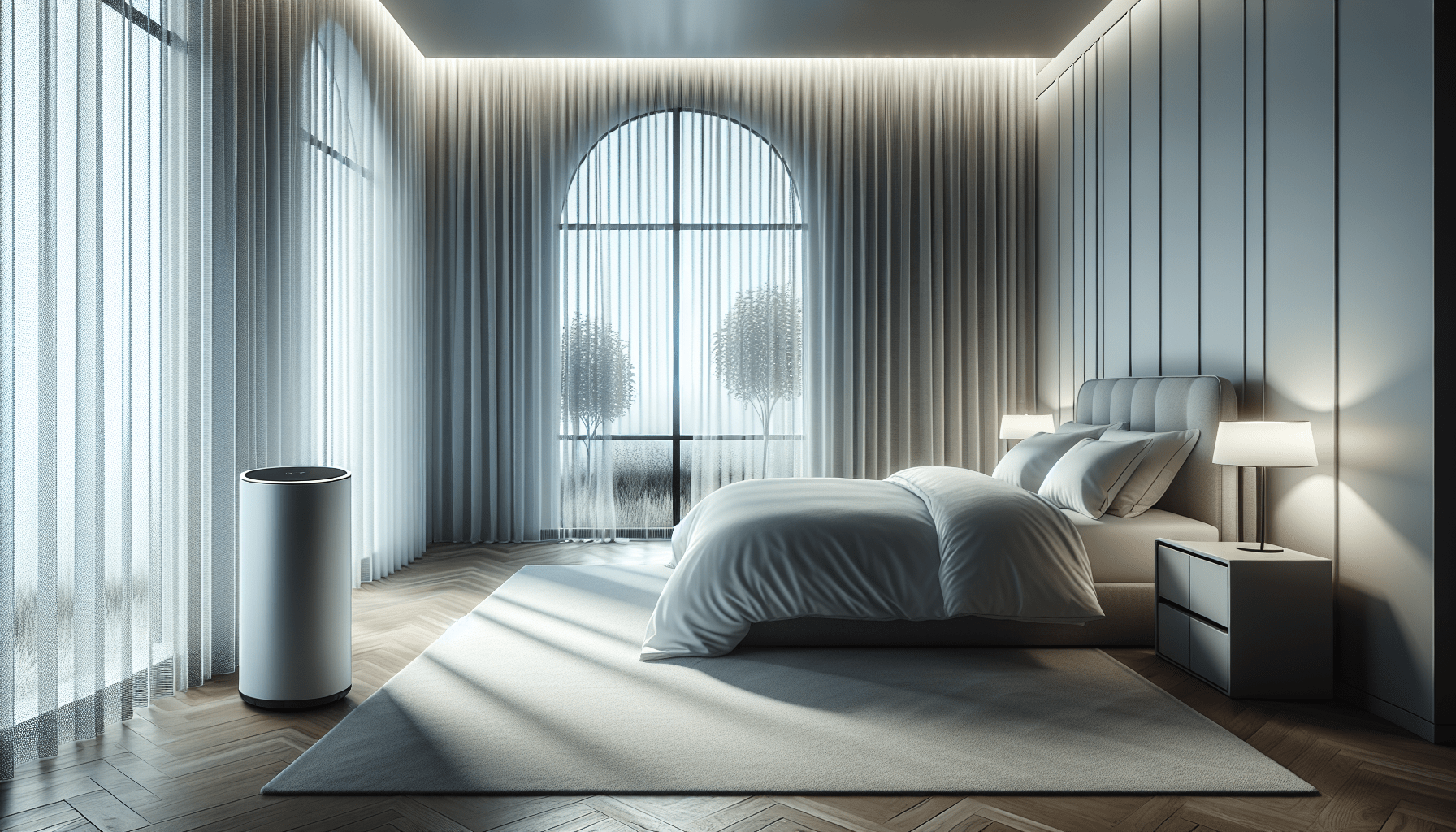In “Tips for Choosing Window Treatments for Allergy Sufferers,” you’ll discover practical advice to help you create a healthier home environment. This guide dives into the importance of selecting the proper window coverings that minimize allergen accumulation, such as dust and pollen, while still enhancing your living space. By following these tips, you can find the perfect balance between functionality and style, ensuring your windows look great and your air stays clean. Have you ever found yourself sneezing endlessly or dealing with itchy eyes after spending time in your home? If you’re an allergy sufferer, the very space that should offer you comfort and relaxation might sometimes feel like a battleground. Surprisingly, your window treatments might be contributing to your discomfort. The good news? With a bit of knowledge, you can choose window treatments that not only enhance your home’s aesthetics but also help manage allergy symptoms.
Tips for Choosing Window Treatments for Allergy Sufferers
When it comes to crafting a cozy and allergy-friendly home, one of the most overlooked aspects is your window treatments. But how exactly do you go about selecting the right ones? Let’s break it down.

Understanding Allergies and Window Treatments
The Role of Your Environment
Your immediate environment plays a significant role in how often and how intensely you experience allergy symptoms. The air quality inside your home can be influenced by various factors, including your window treatments. Dust, pollen, mold, and pet dander can accumulate on fabrics, which can become a breeding ground for allergens.
Common Allergens in Home Settings
Here’s a quick breakdown of some common allergens:
| Allergen | Potential Sources | Symptoms |
|---|---|---|
| Dust mites | Carpets, upholstered furniture, beds | Sneezing, runny nose, itchy eyes |
| Pollen | Windows, doors, brought in by pets | Sneezing, congestion, itchy throat |
| Pet dander | Pet hair, pet bedding, furniture | Sneezing, coughing, itchy and watery eyes |
| Mold spores | Bathrooms, kitchens, near windows | Nasal congestion, coughing, wheezing |
Now that we understand what we’re up against, let’s look at how you can minimize these allergens with the right window treatments.
Types of Window Treatments
There are several types of window treatments to choose from, and each type has its pros and cons if you are an allergy sufferer. Let’s dive into the specific options available to you.
Blinds
Blinds are generally a good choice for people with allergies as they are easy to clean and do not easily collect dust. They are available in different materials like wood, metal, and faux wood, giving you plenty of options to match your décor.
Pros:
- Easy to clean (simply wipe with a damp cloth)
- Less fabric to trap allergens
- Can be adjusted for light control
Cons:
- Slats can still collect some dust
- May require regular cleaning
Shutters
Shutters are another excellent choice for allergy sufferers. They are sturdy, long-lasting, and provide great light control options. They are often considered a more permanent fixture and can even increase your home’s value.
Pros:
- Easy to clean
- Durable and long-lasting
- Can be custom-fitted for your windows
Cons:
- Can be more expensive than other options
- Installation is often more complex
Roll-Up Shades
Roll-up shades are convenient and practical. Many are made from materials that are less likely to harbor allergens, and their simple design allows for easy cleaning.
Pros:
- Easy to install and use
- Simple to clean
- Wide variety of styles and materials
Cons:
- Limited light control compared to blinds or shutters
- Might not be as durable
Curtains and Drapes
While curtains and drapes can add a cozy touch to any room, they tend to collect a lot of dust and allergens, making them less ideal for an allergy-friendly home. However, if you prefer curtains for aesthetic reasons, opt for lighter, washable fabrics.
Pros:
- Wide variety of styles and materials
- Can be machine-washed (if light and manageable)
- Adds a cozy feel to rooms
Cons:
- Can collect dust and other allergens easily
- Requires frequent washing
Material Matters
The material of your window treatments can significantly impact the level of allergens present. Opt for materials that are easy to clean and less likely to trap dust and pollen.
Natural vs. Synthetic Materials
Natural Materials:
- Cotton, linen, and other natural fibers are breathable but can collect dust more easily. However, they are often machine-washable, which makes them easier to maintain.
Synthetic Materials:
- Polyester, faux silk, and other synthetic fabrics are often more resistant to mold and mildew. Many are also machine-washable, making them a practical choice for allergy sufferers.
Hypoallergenic Treatments
Look for treatments labeled as hypoallergenic. These products are designed to minimize the collection of dust and other allergens, making them an ideal choice for those sensitive to environmental factors.
Special Coatings
Some window treatments come with special antibacterial and anti-dust mite coatings to help keep allergens at bay. These can be an excellent investment in the long run, ensuring a healthier living space.
Maintenance Tips
No matter what type of window treatment you choose, regular maintenance is key to keeping allergens at bay.
Cleaning Tips for Different Window Treatments
Blinds:
- Use a microfiber cloth or a duster. For a deeper clean, remove the blinds and wash them with soap and water in the bathtub.
Shutters:
- Wipe down with a damp cloth or a vacuum with a brush attachment to remove dust from crevices.
Roll-Up Shades:
- Regularly vacuum or wipe down with a damp cloth.
Curtains and Drapes:
- Wash machine-friendly fabrics regularly. For heavier drapes, vacuum them using an upholstery attachment or consider dry cleaning.
Frequency of Cleaning
- Blinds and shutters should be cleaned monthly.
- Roll-up shades can be wiped down every couple of weeks.
- Curtains and drapes should be washed once every one to two months, depending on exposure to allergens.

Installation Tips
Proper installation can also influence how well your window treatments manage allergens.
Fit Matters
Ensure that your window treatments are custom-fitted to your windows to minimize gaps where dust and pollen can enter. Custom fitting also prevents unnecessary crevices where dust can accumulate.
Avoid Heavy Drapes
Avoid using heavy, layered drapes that can trap more allergens. Instead, opt for lightweight treatments that allow for regular washing and cleaning.
Consider Window Seals
Proper seals around windows can help prevent outdoor allergens like pollen from entering your home. This additional line of defense can make a significant difference, especially during peak allergy seasons.
Additional Tips for Allergy Management
While choosing the right window treatments is crucial, a holistic approach to allergy management within your home can further alleviate symptoms.
Air Purifiers
Consider using an air purifier in rooms where you spend the most time. High-efficiency particulate air (HEPA) filters are particularly effective at removing allergens from the air.
Humidity Control
Maintaining an appropriate indoor humidity level (30-50%) can help prevent mold growth and reduce dust mites. Use a dehumidifier if necessary.
Cleaning Schedule
Keep a regular cleaning schedule for your home, focusing on high-traffic areas where allergens are most likely to accumulate.
Flooring Choices
Consider opting for hard flooring instead of carpets, as they are easier to keep free of allergens.
Bedding Choices
Encasing mattresses and pillows in allergen-proof covers can significantly reduce exposure to dust mites.
Pet Management
If you have pets, regularly bathe and groom them to minimize dander. Limit their access to bedrooms and areas where you spend a lot of time.
Seasonal Considerations
Allergies can vary with the seasons, so consider adjusting your window treatment routine accordingly.
Spring
Spring is notorious for high pollen levels. During this time, keep windows closed as much as possible and make sure to clean your window treatments more frequently.
Summer
Dust mites thrive in humid environments, so keeping humidity levels in check during the summer is crucial. Regularly clean and vacuum your window treatments.
Fall
As leaves fall and mold becomes more prevalent, ensure that your window seals are intact and that you’re diligent about cleaning.
Winter
Although pollen levels drop, indoor allergens like dust mites can still cause problems. Maintain your cleaning schedule to ensure a restful winter season.
Final Thoughts and Recommendations
Choosing the right window treatments for your home as an allergy sufferer involves more than just picking something that looks good. By opting for easy-to-clean materials and considering hypoallergenic options, you can make a significant difference in your daily comfort.
Summary
- Understand Common Allergens: Identify potential sources and their symptoms.
- Choose the Right Type of Window Treatment: Blinds, shutters, roll-up shades, or lightweight curtains.
- Opt for Allergy-Friendly Materials: Natural or synthetic, as long as they are easy to clean.
- Conduct Regular Maintenance: Consistent cleaning can keep allergens at bay.
- Install Properly: Ensure a good fit and avoid heavy drapes.
- Adopt Holistic Allergy Management: Use air purifiers, control humidity, and maintain a regular cleaning schedule.
Action Steps
- Assess your current window treatments and identify what needs replacing.
- Research and choose the best alternatives based on the guidelines provided.
- Plan a consistent maintenance schedule to keep allergens under control.
- Implement additional allergy management practices as needed.
Adopting these practices will not only help manage your allergy symptoms but also contribute to creating a healthier living environment. Happy decorating, and here’s to an allergy-free home!
